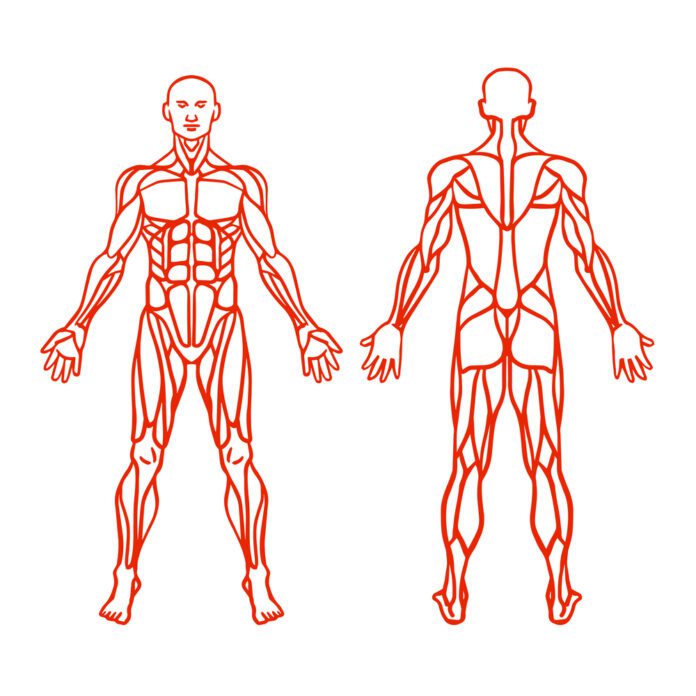Overview Of Limb-Girdle Muscular Dystrophy (LGMD)
Limb-Girdle Muscular Dystrophy (LGMD) is a term for a group of diseases that cause weakness and wasting of the muscles in the arms and legs. The muscles most affected are those closest to the body (proximal muscles), specifically the muscles of the shoulders, upper arms, pelvic area, and thighs.
The severity, age of onset, and features of limb-girdle muscle dystrophy vary among the many subtypes of this condition and may be inconsistent even within the same family. Signs and symptoms may first appear at any age and generally worsen with time, although in some cases they remain mild.
In the early stages of limb-girdle muscular dystrophy, affected individuals may have an unusual walking gait, such as waddling or walking on the balls of their feet, and may also have difficulty running. They may need to use their arms to press themselves up from a squatting position because of their weak thigh muscles. As the condition progresses, people with limb-girdle muscular dystrophy may eventually require wheelchair assistance.
Muscle wasting may cause changes in posture or in the appearance of the shoulder, back, and arm. In particular, weak shoulder muscles tend to make the shoulder blades (scapulae) “stick out” from the back, a sign known as scapular winging. Affected individuals may also have an abnormally curved lower back (lordosis) or a spine that curves to the side (scoliosis). Some develop joint stiffness (contractures) that can restrict movement in their hips, knees, ankles, or elbows. Overgrowth (hypertrophy) of the calf muscles occurs in some people with limb-girdle muscular dystrophy.
Weakening of the heart muscle (cardiomyopathy) occurs in some forms of limb-girdle muscular dystrophy. Some affected individuals experience mild to severe breathing problems related to the weakness of muscles needed for breathing. In some cases, the breathing problems are severe enough that affected individuals need to use a machine to help them breathe (mechanical ventilation).
Intelligence is generally unaffected in limb-girdle muscular dystrophy; however, developmental delay and intellectual disability have been reported in rare forms of the disorder.
Commonly Associated With
- limb-girdle syndrome
- myopathic limb-girdle syndrome
Causes Of Limb-Girdle Muscular Dystrophy (LGMD)
The various forms of limb-girdle muscular dystrophy are caused by mutations in many different genes. These genes provide instructions for making proteins that are involved in muscle maintenance and repair.
Some of the proteins produced from these genes assemble with other proteins into larger protein complexes. These complexes maintain the physical integrity of muscle tissue and allow the muscles to contract. Other proteins participate in cell signaling, cell membrane repair, or the removal of potentially toxic wastes from muscle cells.
Limb-girdle muscular dystrophy is classified on the basis of its inheritance pattern and genetic cause. Limb-girdle muscular dystrophy type 1 includes forms of the disorder that have an inheritance pattern called autosomal dominant. Limb-girdle muscular dystrophy type 2 includes forms of the disorder that have an inheritance pattern called autosomal recessive.
Calpainopathy, or limb-girdle muscular dystrophy type 2A, is caused by mutations in the CAPN3 gene. Type 2A is the most common form of limb-girdle muscular dystrophy, accounting for about 30 percent of cases. Dysferlinopathy, also called limb-girdle muscular dystrophy type 2B, is caused by mutations in the DYSF gene.
Sarcoglycanopathies are forms of limb-girdle muscular dystrophy caused by mutations in the SGCA, SGCB, SGCG, and SGCD genes. These sarcoglycanopathies are known as limb-girdle muscular dystrophy types 2D, 2E, 2C, and 2F respectively.
A TTN gene mutation causes limb-girdle muscular dystrophy type 2J, which has been identified only in the Finnish population. Mutations in the ANO5 gene cause limb-girdle muscular dystrophy type 2L. Mutations in several other genes cause forms of limb-girdle muscular dystrophy called dystroglycanopathies, including limb-girdle muscular dystrophy types 2I, 2K, 2M, and 2N.
Other rare forms of limb-girdle muscular dystrophy are caused by mutations in several other genes, some of which have not been identified. In addition, for certain forms that are classified by some researchers as limb-girdle muscular dystrophy, other researchers propose grouping them with different, related disorders, such as myofibrillar myopathy, Emery-Dreifuss muscular dystrophy, rippling muscle disease, or Pompe disease.
Other
It is difficult to determine the prevalence of limb-girdle muscular dystrophy because its features vary and overlap with those of other muscle disorders. Prevalence estimates range from 1 in 14,500 to 1 in 123,000 individuals. Limb-girdle muscular dystrophy can have different inheritance patterns.
Most forms of this condition are inherited in an autosomal recessive pattern, which means both copies of the gene in each cell have mutations. The parents of an individual with an autosomal recessive condition each carry one copy of the mutated gene, but they typically do not show signs and symptoms of the condition.
Several rare forms of limb-girdle muscular dystrophy are inherited in an autosomal dominant pattern, which means one copy of the altered gene in each cell is sufficient to cause the disorder.



